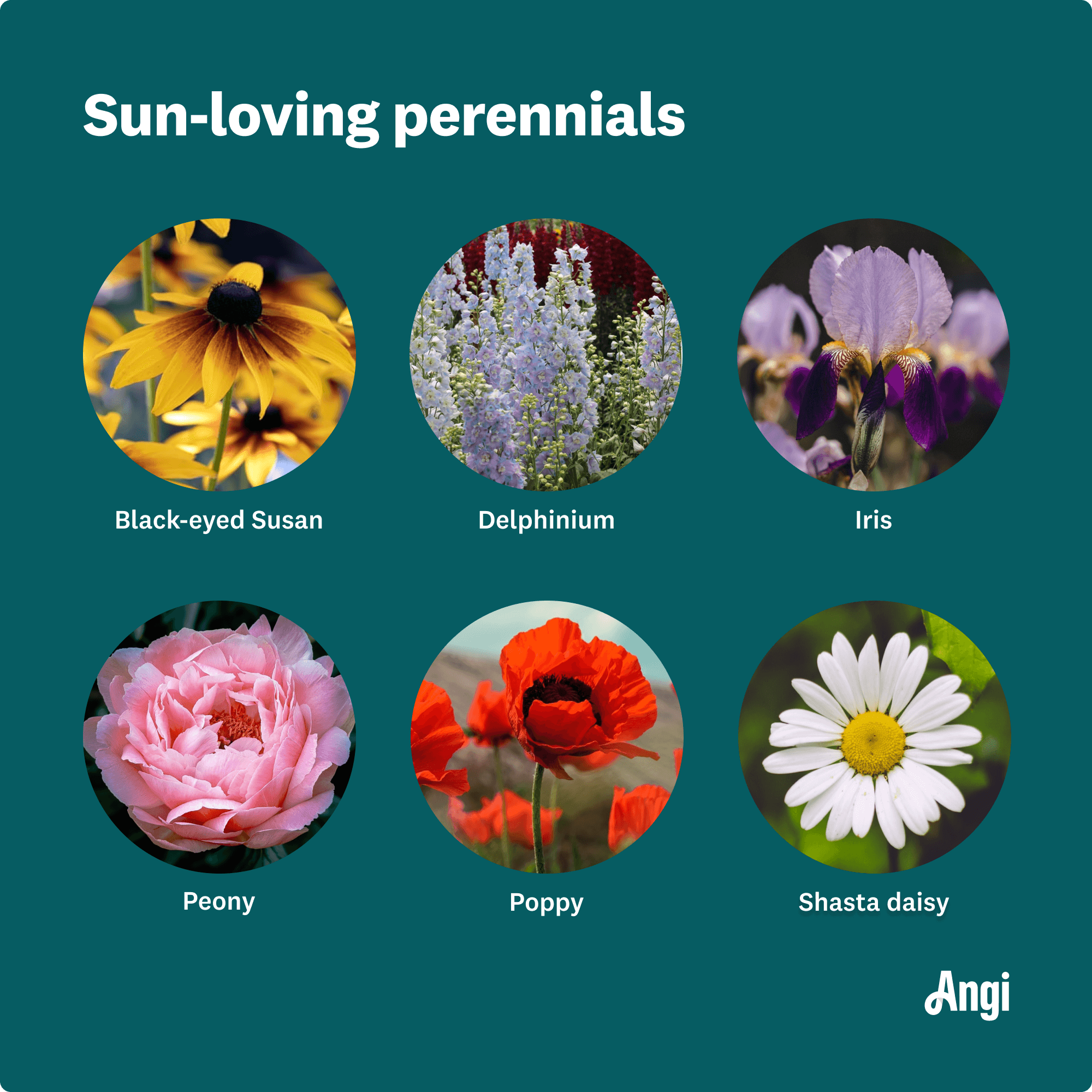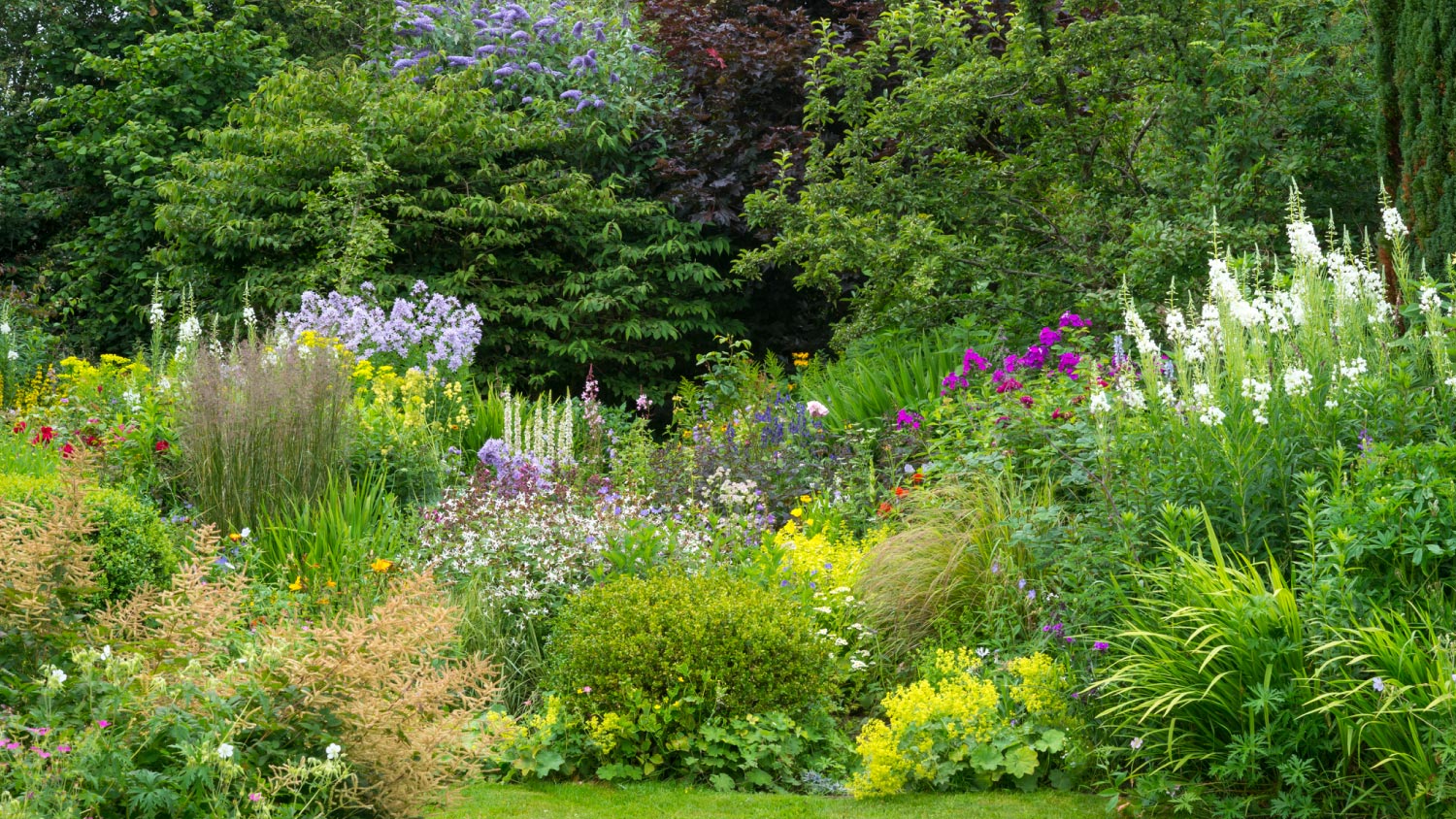
How much do hedges cost? Discover average hedge installation prices, key cost factors, and tips to save money on your landscaping project.
Delight your senses with the right combination of perennials for a riot of color year after year


Choose plants that match your soil type.
Your perennials should be able to cope with the available sunlight.
Pick plants that can thrive in your hardiness zone.
Choose perennial flowers for beautiful foliage and blossoms without replanting them every year. Perennials die back at the end of the growing season and come back at the start of the following one. They're generally easy to grow and maintain, assuming the conditions in your yard meet their basic requirements. And they usually flower for longer than annuals, keeping your garden colorful for months.
We've taken the mystery out of selecting the right perennials so you can quickly choose the plants that suit your space and taste.
Soil conditions are critical to the success of your plants, whether you're growing perennials or annuals. Ideally, you should look at the soil characteristics, like how wet the soil stays and whether it's dry, sandy, clay-like, or loamy. You also need to know the composition and nutrient levels. Is your soil acidic or neutral? Is it nutrient-rich, or does it lack a key component, like nitrogen?
The easiest way to tell is with a soil test. A simple home garden soil test kit costs as little as $15 and can give you a fairly good basic overview of your soil.
Once you understand the conditions in your garden, you can narrow down your planting options or make the appropriate soil amendments to correct any deficiencies.
Take a look at our list of plants for acidic and alkaline soil types.
| Perennials for Acidic Soil | Perennials for Alkaline Soil |
|---|---|
| Bleeding heart | Geranium |
| Butterfly weed | Hosta |
| Japanese iris | Clematis |
| False indigo | Lavender |
| Creeping phlox | Dianthus |
| Daylily | Campanula |
| Crested iris | Ceanothus |
| Azalea | Lily of the valley |
| Camellia | Phacelia |
| Daffodil | Polemonium |

On a sunny day, keep an eye on the space where you want to grow your perennials and see just how much sun it gets. Does it typically get direct sunlight for six to 12 hours? Is it in the shade for four to six hours? Is it shady for the majority of the day? Or maybe the area sits in full sun all day.
Once you've figured out how much sun your growing space receives, you can further narrow your list of suitable plants. If you've got a yard that has lots of direct sunlight, avoid shade-loving and woodland perennials. Similarly, if you've got a shady garden or one with lots of shade-giving large trees, avoid sun lovers that need many hours of direct sunlight to thrive.
| Sun-Loving Perennials | Shade-Tolerant Perennials |
|---|---|
| Black-eyed Susan | Astilbe |
| Coneflower | Bergenia |
| Coreopsis | Bleeding heart |
| Daylily | Brunnera |
| Delphinium | Creeping Jenny |
| Gaura | Fern |
| Hardy geranium | Foamflower |
| Iris | Goatsbeard |
| Penstemon | Hellebore |
| Peony | Heuchera |
| Phlox | Hosta |
| Pincushion flower | Hydrangea |
| Poppy | Lily of the valley |
| Russian sage | Solomon's seal |
| Salvis | Spiderwort |
| Sedum | Vinca |
| Shasta daisy | Violet |

If you plan to plant anything in your yard or containers outdoors, you need to know your hardiness zone. This is determined by the average annual minimum winter temperature in your area.
Remember, some plants need super-cold winter temperatures and don't do well with the high summer heat. On the flip side, some plants need a long period of heat to do well. In fact, in lower hardiness zones, they either won't grow at all, or they'll only grow as annuals, so you lose the benefits of choosing perennials in the first place.
Knowing your hardiness zone makes choosing the right perennials much easier, as most plants have their zone displayed on their label or pot.
| Hardiness Zone | Minimum Winter Temperature (Fahrenheit) |
|---|---|
| 1 | Below -50º |
| 2 | -50º – -40º |
| 3 | -40º – -30º |
| 4 | -30º – -20º |
| 5 | -20º – -10º |
| 6 | -10º – 0º |
| 7 | 0º – 10º |
| 8 | 10º – 20º |
| 9 | 20º – 30º |
| 10 | 30º – 40º |
Many perennials get pretty big, even if you buy them when they're crammed into a 4-inch pot. As they come back year after year, they'll continue to grow and mature. While some are fairly low-growing and compact or act as ground cover—like phlox, pussytoes, and rose vervain—others grow huge. For example, a giant hibiscus reaches 7 feet tall and 3 feet wide.
When choosing flowers, think about how they'll fill the space as they mature. You don't want to overcrowd the space, as all the plants will suffer, be prone to pests and disease, and some will likely die.
For maximum color for the longest period, choose perennials that bloom at different times. Try to choose a mix of early, mid-season, and late-season bloomers. And for color through late fall and winter, go for a perennial with colorful foliage, like the fiery winter beauty dogwood with its bright orange stems.
For a beautiful, carefully crafted flower garden, it's important you think about the mature aesthetic. Select plants with varying heights.
Plant tall specimens—like delphiniums, hollyhocks, black-eyed Susans, and oriental lilies—at the back of a border or the center of a round or square bed. Then, choose some mid-height plants for the middle area, including anemone, iris, guara, or dicentra.
Next comes the short perennials and those used as ground cover. Choose from shorter plants like echinacea, astilbe, hosta, geranium, lupin, and coreopsis. And, to cover the ground, fill gaps, and line walkways, go for those with a mat-like or trailing growth habit. Options include lobelia, aubrieta, aster alpinus, dianthus, prunella, gypsophila, and thyme.
From average costs to expert advice, get all the answers you need to get your job done.

How much do hedges cost? Discover average hedge installation prices, key cost factors, and tips to save money on your landscaping project.

Leveling your yard can help with drainage and prevent damage to your home. Learn the cost to level a yard and what factors can affect the price.

The cost to remove a boulder depends on the size, location, and equipment needed. Learn the average boulder removal cost and how to save money on removal.

Dreaming of landscaping that makes your entire neighborhood jealous but not sure you’re ready? Ask these common landscaping questions before getting started.

Overseeding your lawn can help fill in sparse areas and grow thick, lush grass without starting over. Find out how to overseed a lawn successfully.

St. Augustine grass generally fares well in warm climates, but brown spots happen. Here are some ways to revive seemingly dead St. Augustine grass.